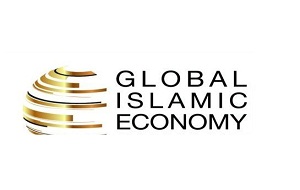
The 2014-2015 report estimates that global expenditure of Muslim consumers on food and lifestyle sectors grew 9.5% from previous years’ estimates to US$2 trillion in 2013 and is expected to reach US$3.7 trillion by 2019 at a compound annual growth rate of 10.8%. This forms the potential core market for halal food & lifestyle sectors.
In addition, this report estimates Islamic finance assets at US$1.66 trillion in 2013. Islamic funds and sukuks led growth with 14% and 11% growth year-on-year, whereas Islamic banking experienced a 5% drop in its assets. The report estimates the potential universe of Islamic finance assets in its core markets (assuming an optimal penetration scenario) to be US$4.2 trillion in 2014.
Value-drivers: The customers of this Islamic economy are universal with shared values. At the highest level, value-based customer needs that are driving the Islamic economy sectors include Islamic/ethical financing, halal food, clothing and family-friendly travel. These needs also extend to business practices that seek Islamic business financing, investment and insurance services. It is, however, important to recognise the wide diversity in awareness and adoption of ‘halal’ among the core customer base of Muslims globally.
This year the report introduces a formal Global Islamic Economy Indicator (GIEI), a composite index that presents the current development health of Islamic economy sectors across 70 core countries. The UAE, Malaysia and Bahrain lead this inaugural composite Index.
The Indicator is not a ranking of current size and growth of each market, but evaluates the quality of the overall Islamic economy ecosystem including social considerations that each has relative to their size. The ranking is weighted towards Islamic finance and halal food ecosystems given their relative sizes to other sectors. Top countries vary per sector reflecting relative strengths in each of the sectors covered in the report.
The estimates of the global Muslim population’s expenditure on Islamic economy identified sectors (besides finance) are as follows: Food market: Global Muslim spending on food and beverages (F&B) has increased 10.8% to reach US$1,292 billion in 2013. The potential core halal food market registered 17.7% of global expenditure in 2013 compared to 16.6% the year before. Top countries with Muslim consumer food consumption are Indonesia (US$190 billion), Turkey (US$168 billion), Pakistan (US$108 billion) and Iran (US$97 billion), based on 2013 data.
Meanwhile, the UAE, Malaysia and Australia lead the Halal Food Indicator that focusses on the health of the halal food ecosystem a country has relative to its size. A special focus report on Halal Food logistics estimates logistical costs for the potential global halal food market to be US$151 billion in 2013.
Clothing & fashion market: Global Muslim consumer spending on ‘clothing and footwear’ has increased 11.9% to reach US$266 billion in 2013. Top countries with Muslim consumers clothing consumption (based on 2013 data) are Turkey (US$39.3 billion), the United Arab Emirates (US$22.5 billion), Indonesia ($18.8 billion), and Iran (US$17.1 billion).
Meanwhile, the UAE, China and Italy lead the Fashion Indicator that focuses on the health of the fashion ecosystem a country has relative to its size. Given the importance of digital platforms to this space, a special ‘Muslim Fashion e-commerce’ focus report looks at developments and hotspots for modest clothing/fashion segments across the globe. DinarStandard estimates put Muslim consumers’ e-commerce expenditure at US$4.8 billion in 2013.
Tourism market: Global Muslim spending on tourism (outbound) has increased 7.7% to reach US$140 billion in 2013 (excluding Hajj and Ummrah). This is 11.6% of global expenditure and expected to reach US$238 billion by 2019. Top source countries of Muslim tourists based on 2013 expenditure were: Saudi Arabia (US$17.8 billion), Iran (US$14.3 billion), the United Arab Emirates (US$11.2 billion), Qatar (US$ 7.8 billion), Kuwait (US$7.7 billion), and Indonesia (US$7.5 billion).
Meanwhile, the UAE, Malaysia and Singapore lead the Halal Tourism Indicator that focuses on the health of the family-friendly tourism ecosystem a country has relative to its size. A special focus report ‘Hajj & Ummrah travel’ estimates there were a total 5.7 million Hajj and Umrah pilgrims (not including domestic) with total expenditure on Hajj and Umrah at US$16.2 billion (including air travel) in 2013.
Media & recreation market: Global Muslim spending on ‘recreation & culture’ has grown 7.3% to reach US$185 billion in 2013. This represents 5.2% of global expenditure and expected to reach $301 billion by 2019. Top countries with Muslim consumers’ recreation consumption (based on 2013 data) are: Turkey (US$30.3 billion), Indonesia (US$9.4), United States (US$9.1 billion), Iran (US$9 billion), and France (US$8.4 billion.) Meanwhile, the UAE, Singapore and the United Kingdom lead the Media & Recreation Indicator that focuses on the health of the family-friendly/Islamic media & recreation ecosystem a country has relative to its size. A special focus report ‘Islam themed broadcast media’ highlights the Ramadan-drama seris/Musalsalat and various broadcast channel developments driven by much higher (9.9%) projected TV advertising growth for OIC countries between the years 2013-18 than the global average of 5.5% for the same time period.
Pharmaceutical & Cosmetics market: Global Muslim consumer spending on pharmaceuticals has increased 2.1% to reach US$72 billion in 2013. Top countries with Muslim pharmaceutical consumers are Turkey (US$8.9 billion), Saudi Arabia (US$5.9 billion), Indonesia (US$4.9 billion), and Iran (US$3.7 billion.) Global Muslim spending on cosmetics increased 1% to reach US$46 billion in 2013. Top countries with Muslim cosmetics consumers are the United Arab Emirates (US$4.9 billion), Turkey (US$4.4 billion), India (US$3.5 billion), and Russia (US$3.4 billion), based on 2013 estimates.
Malaysia, Egypt and Singapore lead a combined Halal Pharmaeutical & Cosmetics Indicator that focuses on the health of the Halal pharmaceutical & cosmetics ecosystem a country has relative to its size.
Source : WAM News Agency for United Arab Emirates












